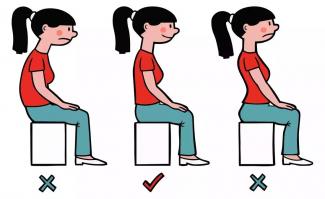
Kalpana Kamdar, a physiotherapist from Ahmedabad, emphasises the importance of good posture to protect our bones, joints, muscles and ligaments and suggests simple ways to keep our musculoskeletal system in perfect shape. Video of webinar recording below.
You should listen to Physiotherapist Kalpana Kamdar below on how to prevent aches and pains. While this was recorded during COVID lockdown, it applies to anyone who has a sedentary lifestyle.
In the past three articles we have discussed how bad postures are the actual reason for pain and discomfort in most cases, though it is frequently wrongly diagnosed and treated as local issues like Cervical Spondylitis, Frozen Shoulder, Tennis Elbow, Carpal Tunnel Syndrome, etc. Treatment administered locally does not give much relief. If the posture is not corrected, it will continue to load the tissues and will not allow healing or relief from symptoms.
So it is crucial to first understand POSTURE.
Posture is defined as a position or attitude of the body and the relative arrangement of the body parts while at rest or in motion. Having an ideal posture helps keep our bones and joints in the correct alignment so that our supporting muscles and ligaments are then being used properly. Less wear and tear on these muscles enables us to live better, feel better and move better!
Standing or sitting in a neutral and aligned position helps our body to function optimally. It helps unload the tissues of abnormal stresses and, therefore, reduce undue wear and tear, ensure better circulation and relax the body as a whole.
You must have most likely heard “Sitting is the new smoking”.
Research suggests that sitting for long hours increases your risk for cardiovascular disease and diabetes. Unfortunately, in today’s times, it includes almost all of us as technology keeps us glued to computers and other electronic devices. We are sitting for longer periods of time than ever before, making us more prone to a plethora of lifestyle diseases.
To avoid these bad effects of a lifetime of prolonged sitting, let’s try to learn how to maintain a good posture while standing and sitting.
HOW CAN WE STAND CORRECTLY?
- Imagine a string attached to the top of your head, pulling you upwards just enough to stretch you taller.
- Stand with your weight evenly distributed between your heel and the balls of your feet.(imagine a triangle on the sole of your foot).
- Your feet should be about shoulder width, and pointing slightly outward.
- Tuck your tummy in and don’t let your pelvis tilt forward.
- Keep your shoulders back and square.
- Relax your arms and let them hang naturally down the sides of your body.
- Hold your head up straight with your chin tucked in.
- If standing for a long period of time, shift weight from one foot to the other.
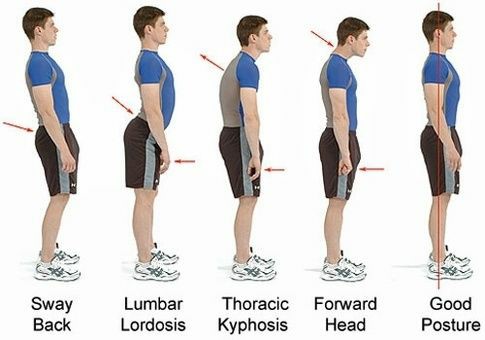
DO NOT:
- Tilt your head forward, backward or sideways. Look straight ahead.
- Keep your shoulders slouched and rounded.
- Stick your chest out, instead try to keep it perpendicular to the ground.
- Wear high heels when standing for long periods of time.
- Avoid locking your knees.
HOW CAN WE SIT CORRECTLY?
- Keep your head straight with the jaw parallel to the floor.
- Keep the shoulders open and square.
- Sit with the breast bone facing straight ahead.
- Sit with the knees at the same level as the hips or slightly lower than the hips.
- Keep the feet flat on the floor or on a foot-rest if they do not reach the floor.
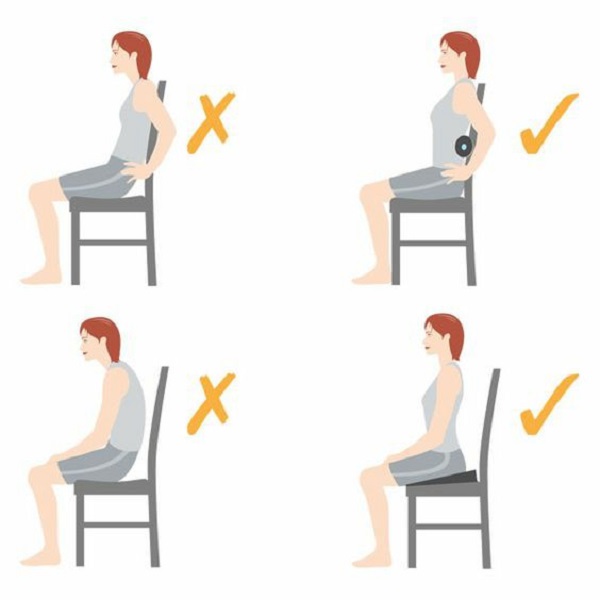
DO NOT:
- Tilt the head forward or sideways.
- Try to keep the back tensed to remain straight.
- Work without supporting the forearms.
- Tuck your feet under the chair.
- Cross your legs above the knees.
GENERAL TIPS WHILE AT A DESK JOB:
- The chair seat should be adjusted to keep your thighs parallel to the ground.
- The computer screen should be moved directly in front of you, about an arm’s length away with the top of the screen just below your eye level. Computer screens too low or too high can strain your neck and shoulder muscles.
- The keyboard should be placed directly in front of the screen, about 4-6 inches from the desk so the wrists have room to rest while typing.
- While using the mouse, the wrist should be straight.
- Items used frequently, like a stapler, phone, notepad etc. should be kept within reach. Repeatedly stretching and twisting to reach for them may lead to pain, discomfort or injuries.
- If you use the phone a lot, it is advisable to use a speaker phone. Bending your neck to cradle the phone can cause stiffness and pain in muscles, and even ligament damage over time.
- Sitting for long periods can make the blood circulation sluggish and can also cause muscle fatigue. To prevent this, take frequent breaks. Stand up from your chair and take a small walk away from your desk.
- Get the blood flowing by doing some calf raises and shoulder shrugs. If possible you could also try to do some lunges or squats.
- Several short breaks are better than a few long breaks; if possible, take a 1-2 minute break every thirty minutes. At least try to get up and move around every hour.
Though the modern workplace environment does not give room for much movement, and sitting for long can be really harmful to your health, a lot can be achieved just by improving your posture. A correct posture can go a long way in reducing wear and tear of muscles and bones and avoiding injuries, strains and soreness.
SITTING AND WORKING IN BED
Place a pillow or two on your upper legs and rest your arms on those and hold your book so that it is now at your eye level. Or, you can also put a pillow on each side under your thighs/knees to lift your knees up a bit - this will give a bit of a tilt to the pillows on top.
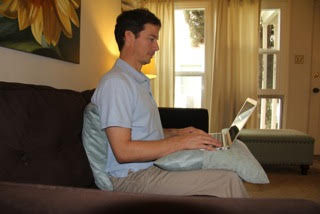
Back support is always needed too. Try sitting all the way back with your bottom touching the headboard or the wall behind. The headboards aren’t always the most comfortable so put a thinner folded pillow behind the lower back to maintain the natural curvature there and another on top for the rest of the back if required. Now the back and arms are supported, your book is just below eye level. All you have to do is look down at the book with your eyes and not bend your neck forward to look.
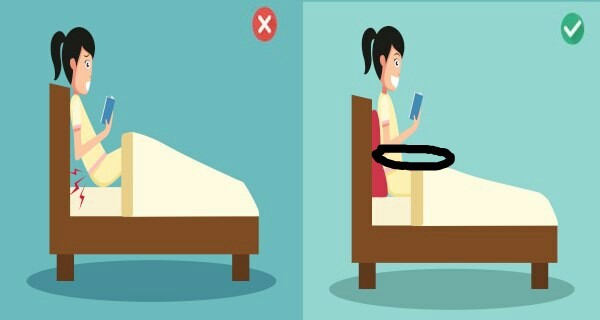
That’s how I advise you to read in bed, however, this still isn’t good for your posture….So do not still sit for too long. Get up every 30-45 minutes or so and walk around a bit.
(Kalpana Kamdar is a Clinical Physiotherapist practising for more than 20 years at the Swayam Physiotherapy Clinic, in Ahmedabad, India. She has currently introduced The Body Alignment Studio where she helps patients understand Posture and its effects on overall health and conducts regular workshops for Posture correction and awareness.)
Image References : www.pinterest.com, http://alexandertechla.com






